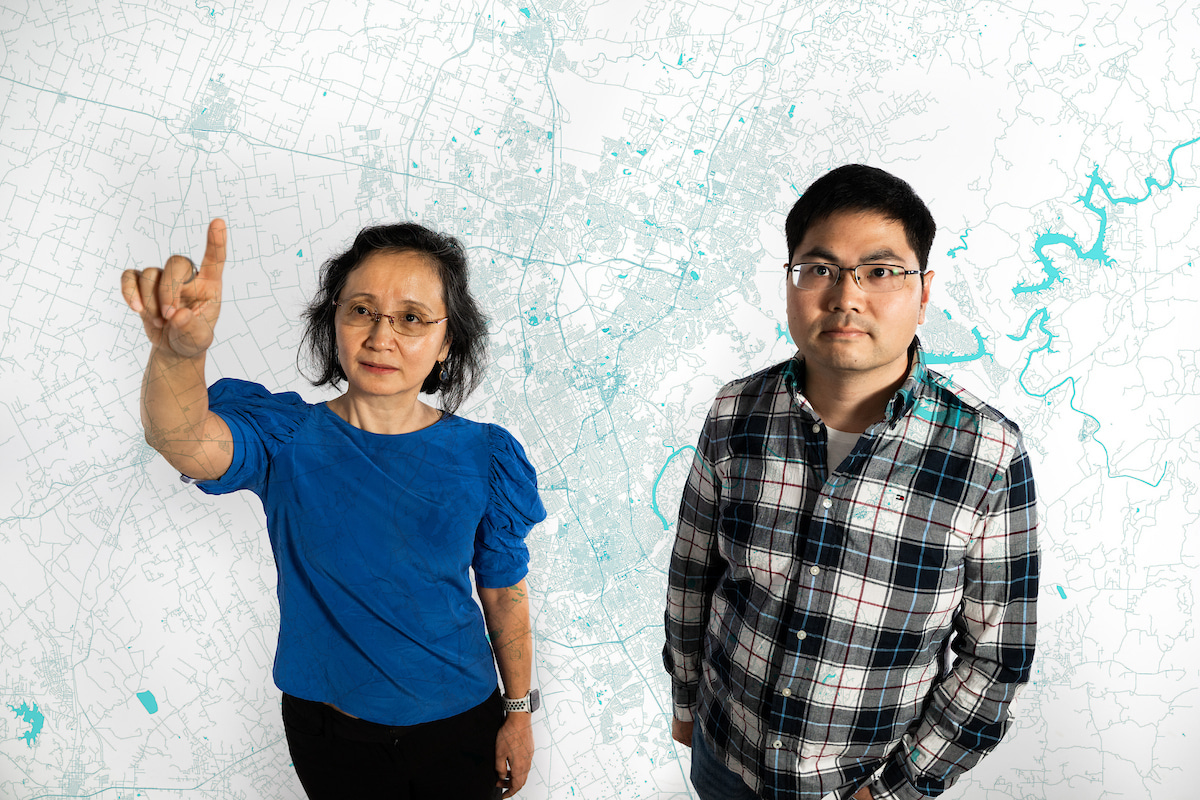
DENTON (UNT), Texas — As Texas’ population grows, researchers at the University of North Texas are developing artificial intelligence tools to help keep the state’s busy highways safer and more efficient. The Texas Demographic Center projects that North Texas will surpass 12 million residents in the next 25 years — bringing more vehicles, more traffic and greater demand for faster response times when issues arise on the road.
One common cause of traffic is debris on the road. Whether it’s large pieces of furniture or fallen trash bags, debris can cause dangerous situations for drivers that often lead to crashes. The Texas Department of Transportation (TxDOT) relies on reports to know when debris is on the state’s more than 3,200 miles of interstate highways. Two researchers at UNT hope to make their job easier.
“The biggest obstacle to timely removal is quick detection,” said Regents Professor of Computer Science and Engineering Yan Huang. “There’s a lot of crossover data of reports, but they’re not being leveraged and utilized to their full extent yet. We want to change that.”
Huang, who specializes in smart transportation and spatial databases and networks, is working alongside Assistant Professor Heng Fan from the same department in the College of Engineering.
“One of the applications of my work is detecting objects from images or videos,” Fan said. “When Dr. Huang talked to me about this project, I thought it was a great application of what I’ve studied in smart transportation. It’s a very interesting project that could benefit TxDOT and potentially other state departments of transportation.”
Together, the researchers will develop an AI system that analyzes data from three sources — WAZE, electric vehicle dash cameras and TxDOT’s closed-circuit television (CCTV) traffic cameras — to track and assess road conditions. WAZE provides real-time, crowdsourced reports from drivers, while CCTV cameras supply continuous video monitoring for TxDOT’s highway operations.
“We’ve seen that roughly 72% of debris reports come from WAZE, and those reports tend to be received about 16 minutes earlier than traditional methods,” Huang said. “By combining WAZE with other crowdsourced data, we hope to detect debris even faster and improve response times.”
The two will work alongside TxDOT and the Texas A&M Transportation Institute (TTI) for the project. TTI is a Texas state agency and member of the Texas A&M University System that focuses on transportation research and innovation. Huang says TTI reached out to her to collaborate on the project after she wrote her project proposal.
“They have experience with the operational side of TxDOT and with WAZE. They’ll also work with transportation management centers to develop communications protocols and learn what their removal processes are so this should be a mutually beneficial collaboration.”
On their end, Huang and Fan will develop a prototype algorithm that will be able to detect debris in real time and label the types of the debris. They plan to test it in three different districts which will be chosen later in the project.
“We need to be able to accurately classify the debris because the process is different if it’s small debris, large debris or an animal,” Huang said. “The goal is to do this as quickly as possible to make removal faster and the roads safer.”
When ready, TTI and TxDOT will test pilot the algorithms. The project will last two years, and the professors hope to bring on a graduate student as well. Huang and Fan both feel this project is only the beginning of leveraging AI for transportation.
“There’s a lot of innovation that can be done after this,” Huang said. “The advancement of AI is so fast and furious, it’s only natural that transportation is going to benefit from it.”